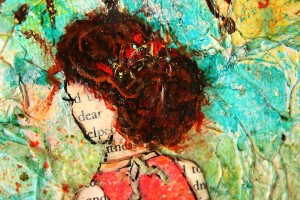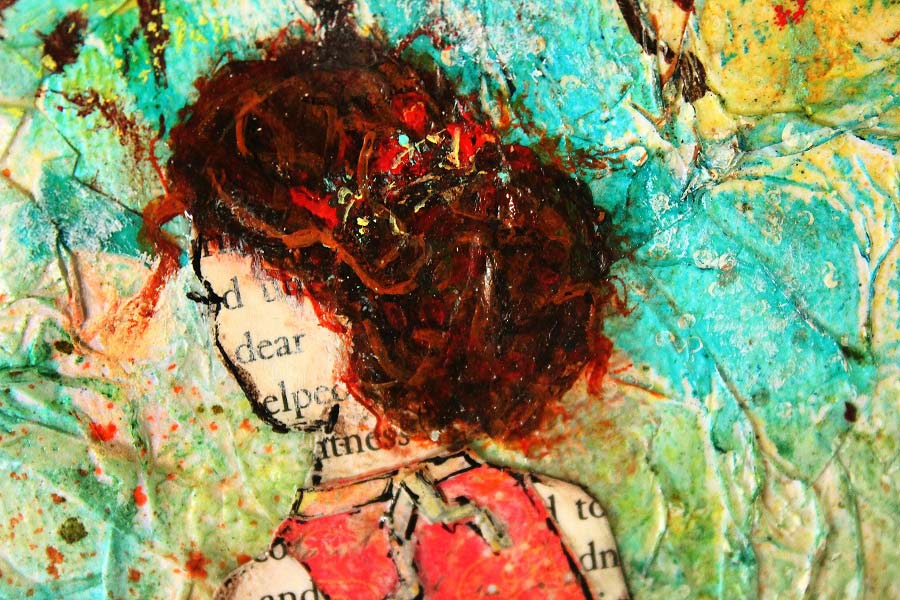Virtual capitalism assures us that economic production is now dean. Industrial spaces are transformed into expensive lofts or tourist centres, supply shops become art galleries, manufacturing has moved offshore or is hidden away in sweatshops. As the meanings associated with these spaces are exchanged for new ones, older histories are erased We are left with vestiges of the old way, but these are subject to time, shifting and deteriorating as their original meanings are abandoned.
Kathryn Walter’s performance/installation Remnants seeks to reveal these ephemeral traces of the past, reminding us that our memories are always provision al and contingent on what we are willing to see. The piece builds on Waiter’s earlier works, specifically Fool’s Gold and Provisions, which investigated the material nature of cultural production. Exhibited as part of the 2005 Images Festival, Remnants was awarded the Images Prize in recognition of the best
Canadian media artwork in the festival.
 CWA
CWA has one studio located in what was once the site of Toronto’s garment industry. The space is small and enclosed, recalling a sweatshop where nothing distracts the worker from the task at hand. Walter sits at an industrial machine and sews together pieces of fabric, painstakingly constructing an unidentifiable object that grows into a vast pile, which eventually claims the claustrophobic gallery space.
At first glance, the process appears as a kind of production for its own sake, an embodiment of the relent less levels of production that underpin capitalist growth. As Walter operates the sewing machine, one begins to see a link with the past, a past of immigrant labour, union struggles and environmental destruction. The movement of the pedals activates a projector that runs a two-minute film loop of factory smokestacks. The sight of belching chimneys seems archaic to those of us living in post-industrial North America, and the black and white images point to an older regime of production. The flickering smokestacks also recall the fleeting nature of memory, their shapes suggesting other shapes that form a part of the culture we inhabit: Roman columns, perhaps, or the spirals of Bernini’s Baldacchino. But if production has become a kind of religion, Walter reminds us that there is always a working body at its foundation
As Walter’s sewing slows the 16 mm film also slows and dims, to prevent the heat of the projector’s bulb damaging the film. Despite this precaution, the film inevitably deteriorates from use and from fibres floating in the small room. When Walter stops her machine, the image goes dark. The machines seem deliberately jerry-rigged, with wires and rubber holding bits of the projector together. I particularly liked the way the film loop could only be activated by Walter’s sewing machine, and thought back to Marx’s assertion that the truth of an economic system is revealed through its relation to labour But Remnants is not didactic its subtlety lies in its recognition of the purposelessness of so much of the production process, illustrated by the pointless reconstruction of remnants. At the same time, by stitching together pieces of fabric Walter has created something new, even if we cannot yet say precisely what that might be.

 CWA has one studio located in what was once the site of Toronto’s garment industry. The space is small and enclosed, recalling a sweatshop where nothing distracts the worker from the task at hand. Walter sits at an industrial machine and sews together pieces of fabric, painstakingly constructing an unidentifiable object that grows into a vast pile, which eventually claims the claustrophobic gallery space.
At first glance, the process appears as a kind of production for its own sake, an embodiment of the relent less levels of production that underpin capitalist growth. As Walter operates the sewing machine, one begins to see a link with the past, a past of immigrant labour, union struggles and environmental destruction. The movement of the pedals activates a projector that runs a two-minute film loop of factory smokestacks. The sight of belching chimneys seems archaic to those of us living in post-industrial North America, and the black and white images point to an older regime of production. The flickering smokestacks also recall the fleeting nature of memory, their shapes suggesting other shapes that form a part of the culture we inhabit: Roman columns, perhaps, or the spirals of Bernini’s Baldacchino. But if production has become a kind of religion, Walter reminds us that there is always a working body at its foundation
As Walter’s sewing slows the 16 mm film also slows and dims, to prevent the heat of the projector’s bulb damaging the film. Despite this precaution, the film inevitably deteriorates from use and from fibres floating in the small room. When Walter stops her machine, the image goes dark. The machines seem deliberately jerry-rigged, with wires and rubber holding bits of the projector together. I particularly liked the way the film loop could only be activated by Walter’s sewing machine, and thought back to Marx’s assertion that the truth of an economic system is revealed through its relation to labour But Remnants is not didactic its subtlety lies in its recognition of the purposelessness of so much of the production process, illustrated by the pointless reconstruction of remnants. At the same time, by stitching together pieces of fabric Walter has created something new, even if we cannot yet say precisely what that might be.
CWA has one studio located in what was once the site of Toronto’s garment industry. The space is small and enclosed, recalling a sweatshop where nothing distracts the worker from the task at hand. Walter sits at an industrial machine and sews together pieces of fabric, painstakingly constructing an unidentifiable object that grows into a vast pile, which eventually claims the claustrophobic gallery space.
At first glance, the process appears as a kind of production for its own sake, an embodiment of the relent less levels of production that underpin capitalist growth. As Walter operates the sewing machine, one begins to see a link with the past, a past of immigrant labour, union struggles and environmental destruction. The movement of the pedals activates a projector that runs a two-minute film loop of factory smokestacks. The sight of belching chimneys seems archaic to those of us living in post-industrial North America, and the black and white images point to an older regime of production. The flickering smokestacks also recall the fleeting nature of memory, their shapes suggesting other shapes that form a part of the culture we inhabit: Roman columns, perhaps, or the spirals of Bernini’s Baldacchino. But if production has become a kind of religion, Walter reminds us that there is always a working body at its foundation
As Walter’s sewing slows the 16 mm film also slows and dims, to prevent the heat of the projector’s bulb damaging the film. Despite this precaution, the film inevitably deteriorates from use and from fibres floating in the small room. When Walter stops her machine, the image goes dark. The machines seem deliberately jerry-rigged, with wires and rubber holding bits of the projector together. I particularly liked the way the film loop could only be activated by Walter’s sewing machine, and thought back to Marx’s assertion that the truth of an economic system is revealed through its relation to labour But Remnants is not didactic its subtlety lies in its recognition of the purposelessness of so much of the production process, illustrated by the pointless reconstruction of remnants. At the same time, by stitching together pieces of fabric Walter has created something new, even if we cannot yet say precisely what that might be.



